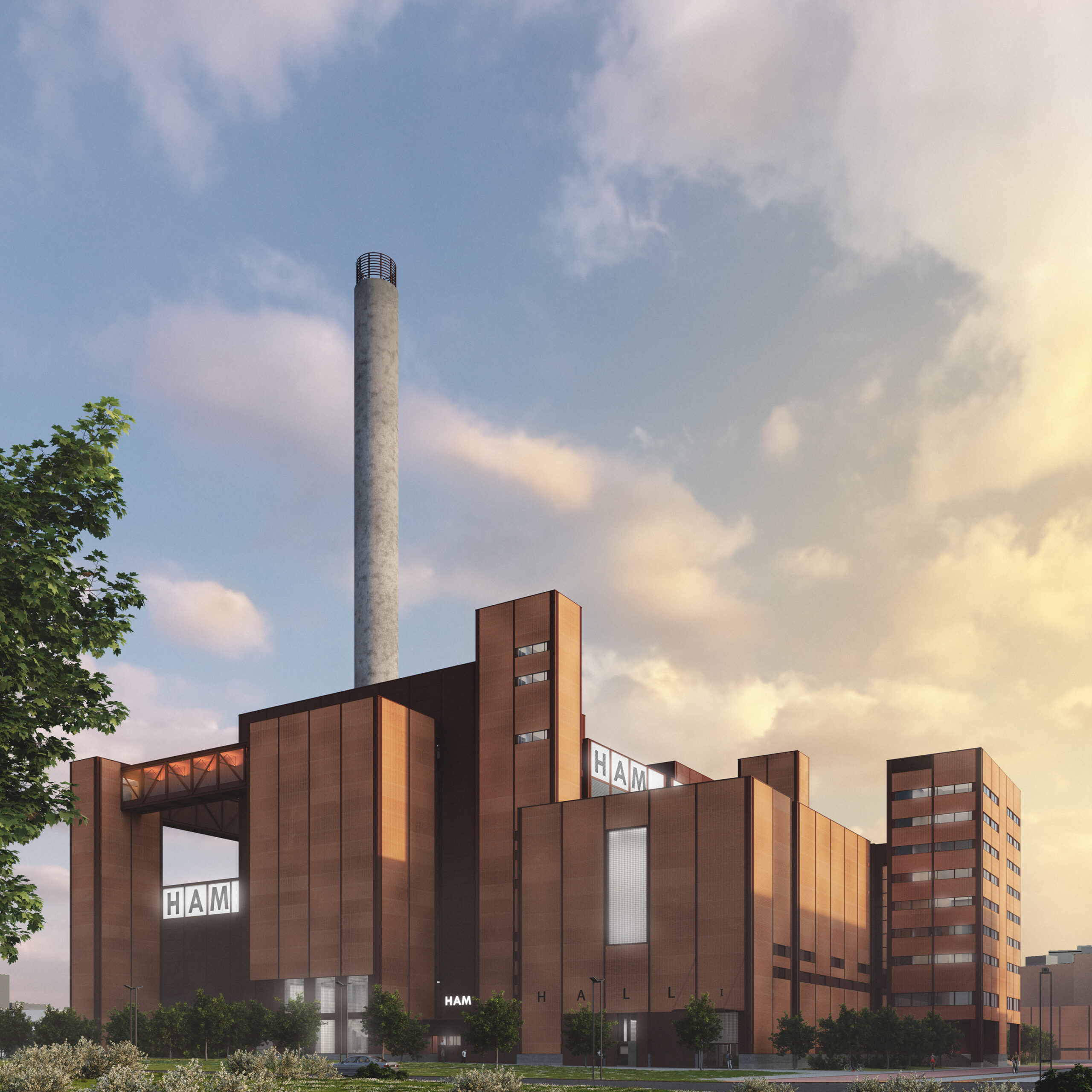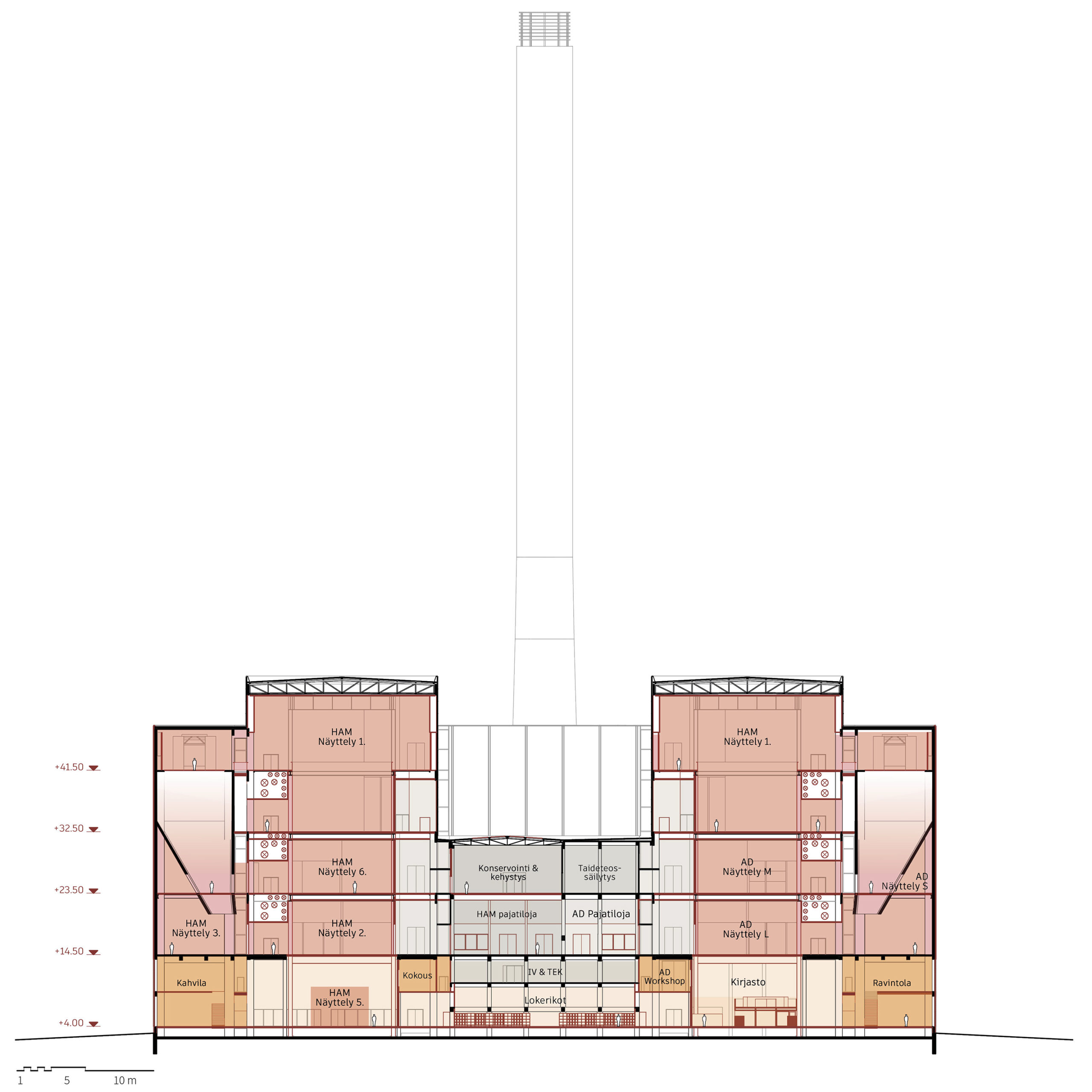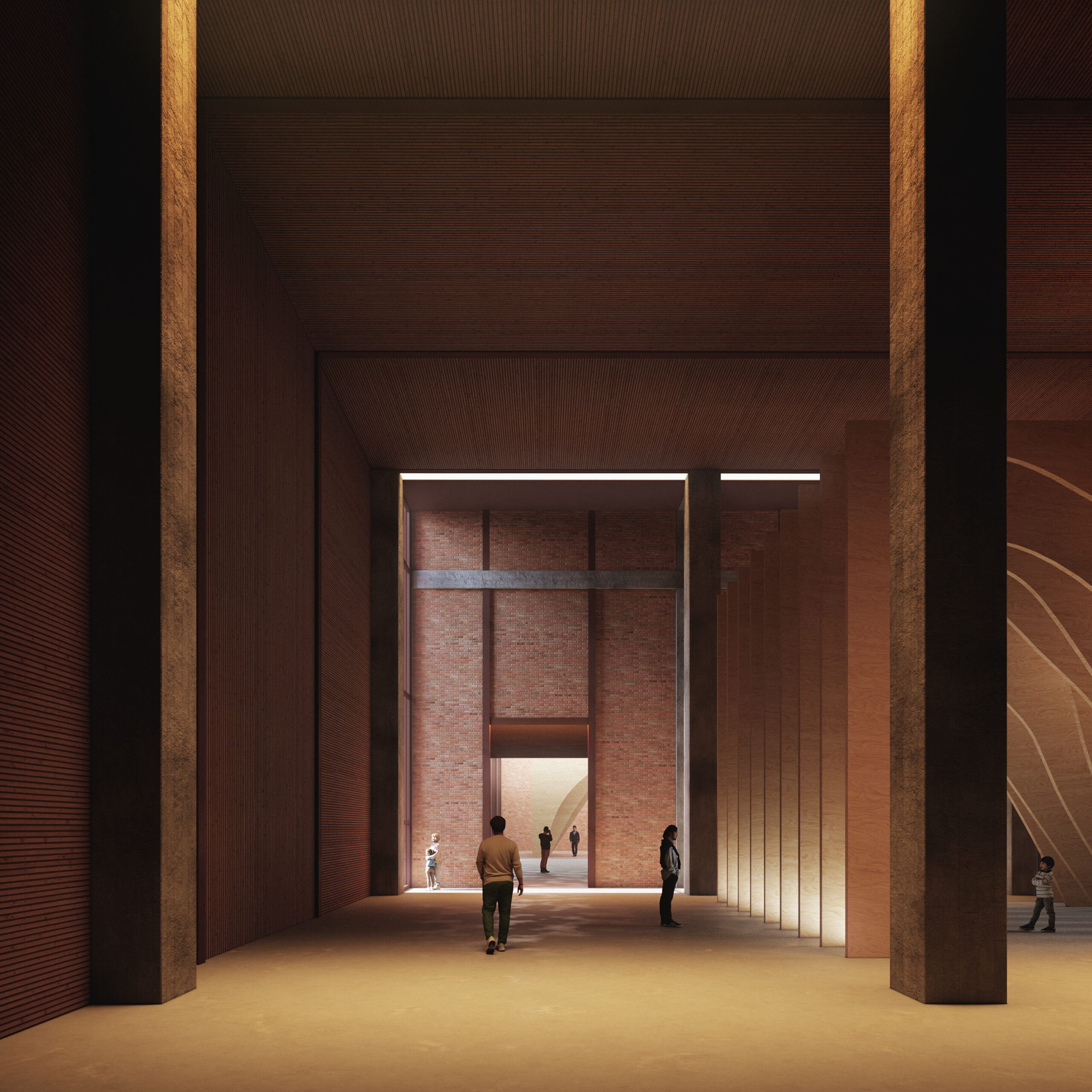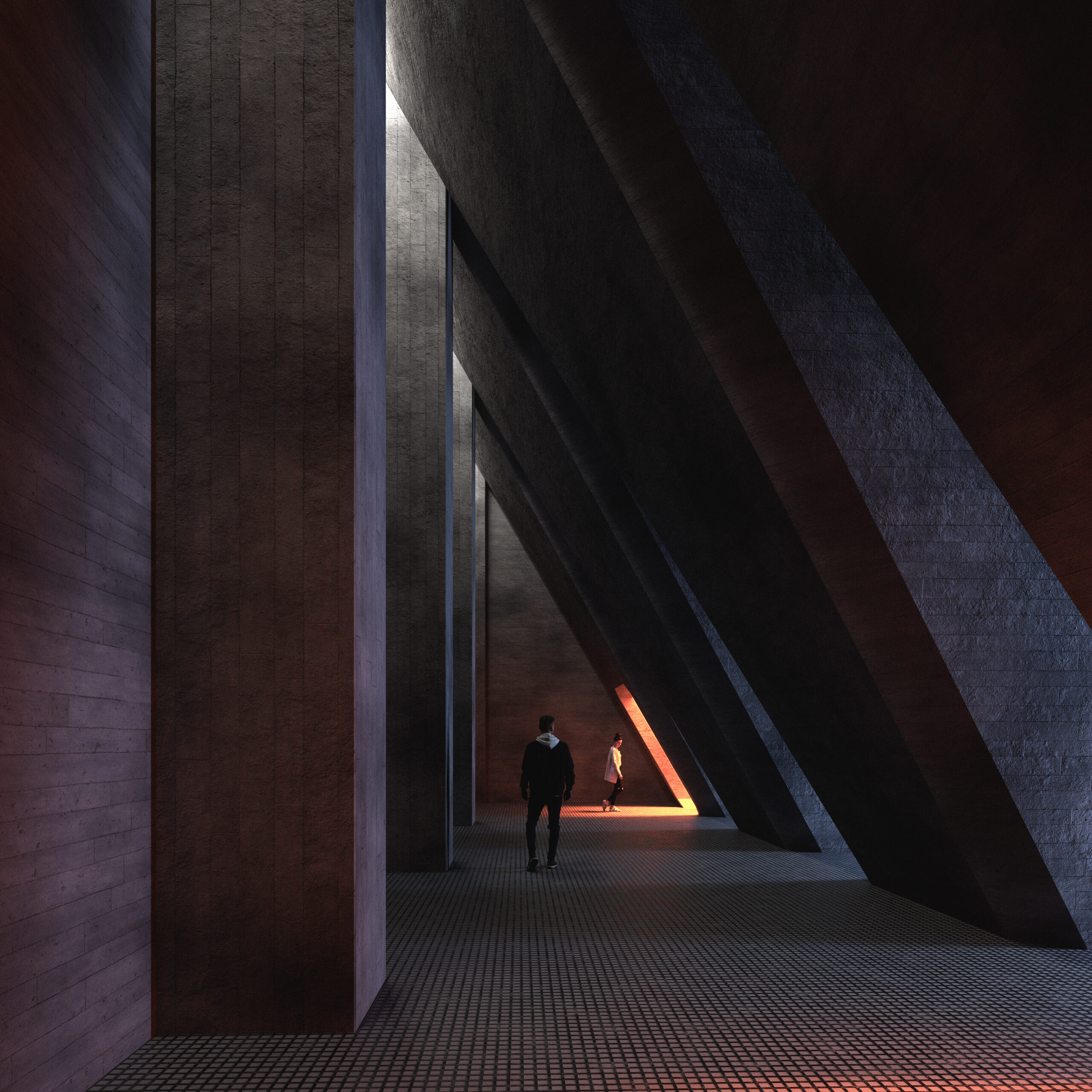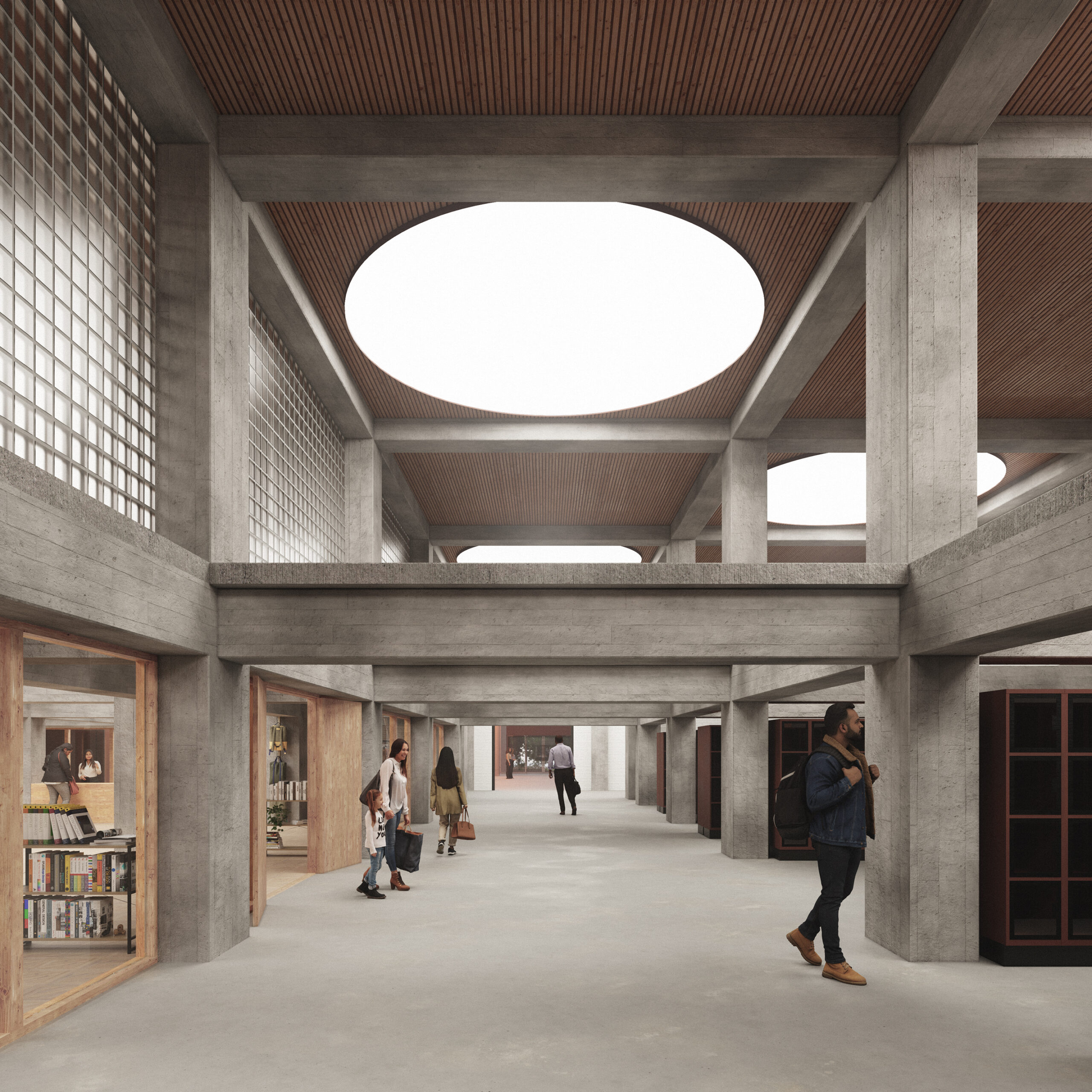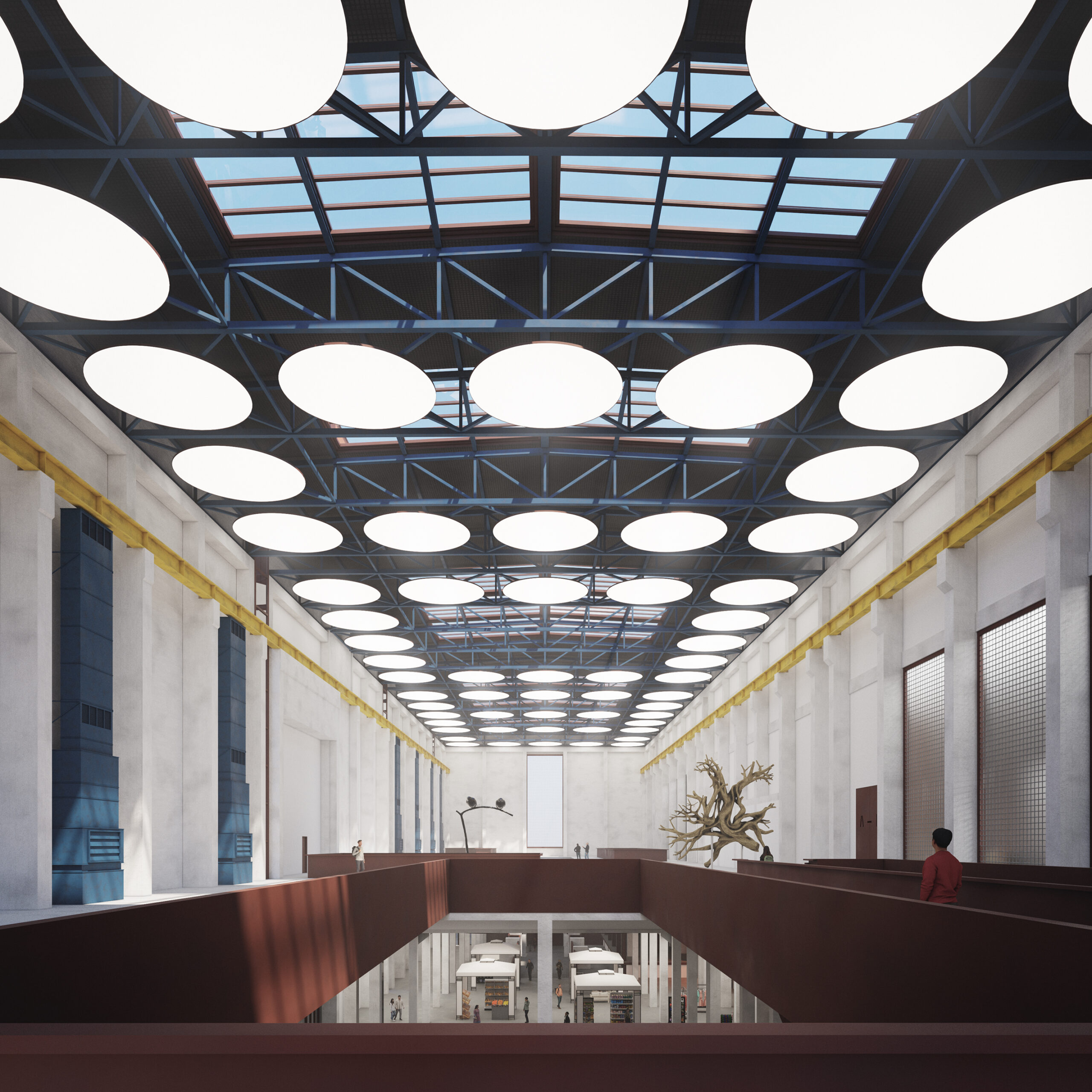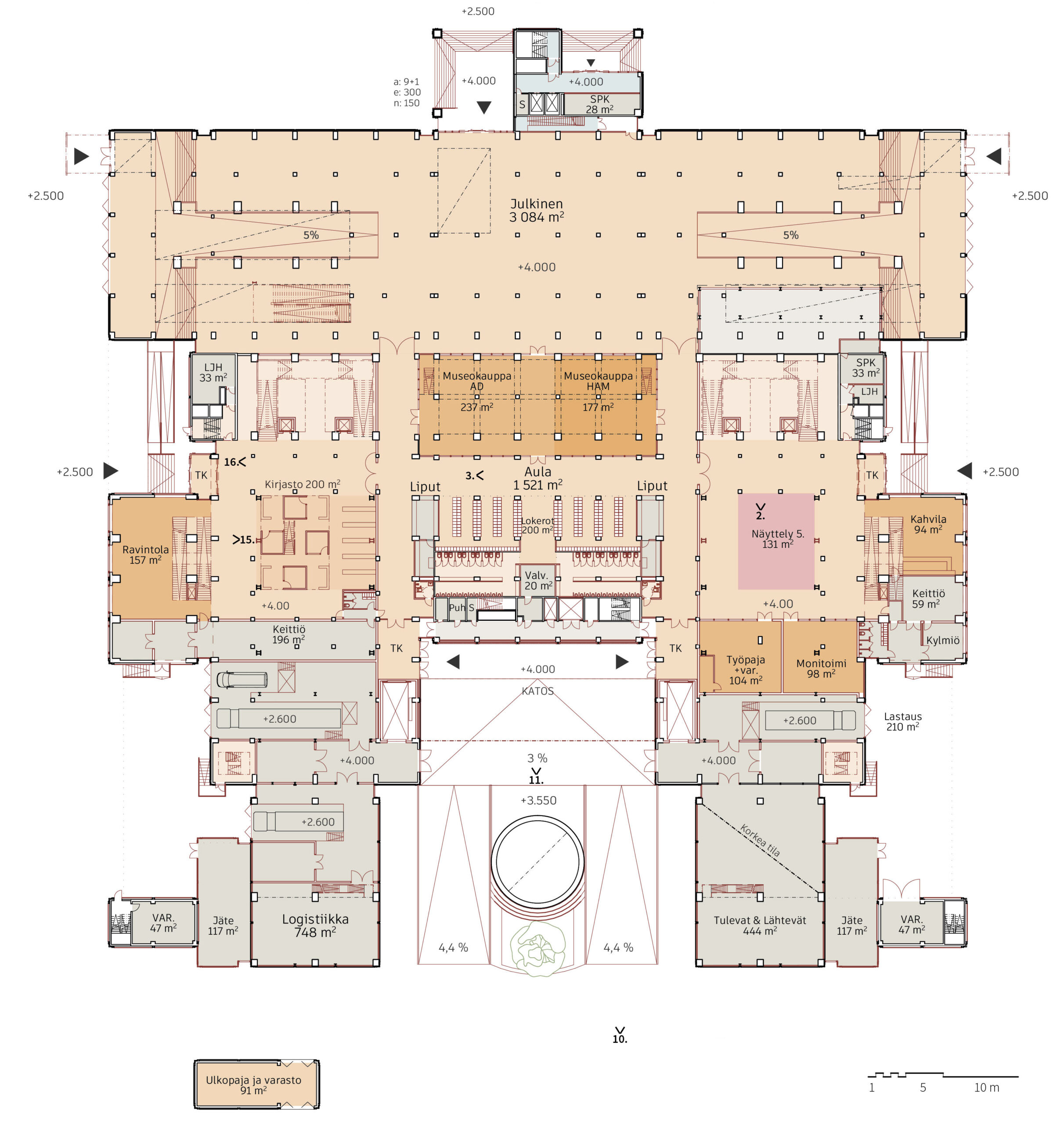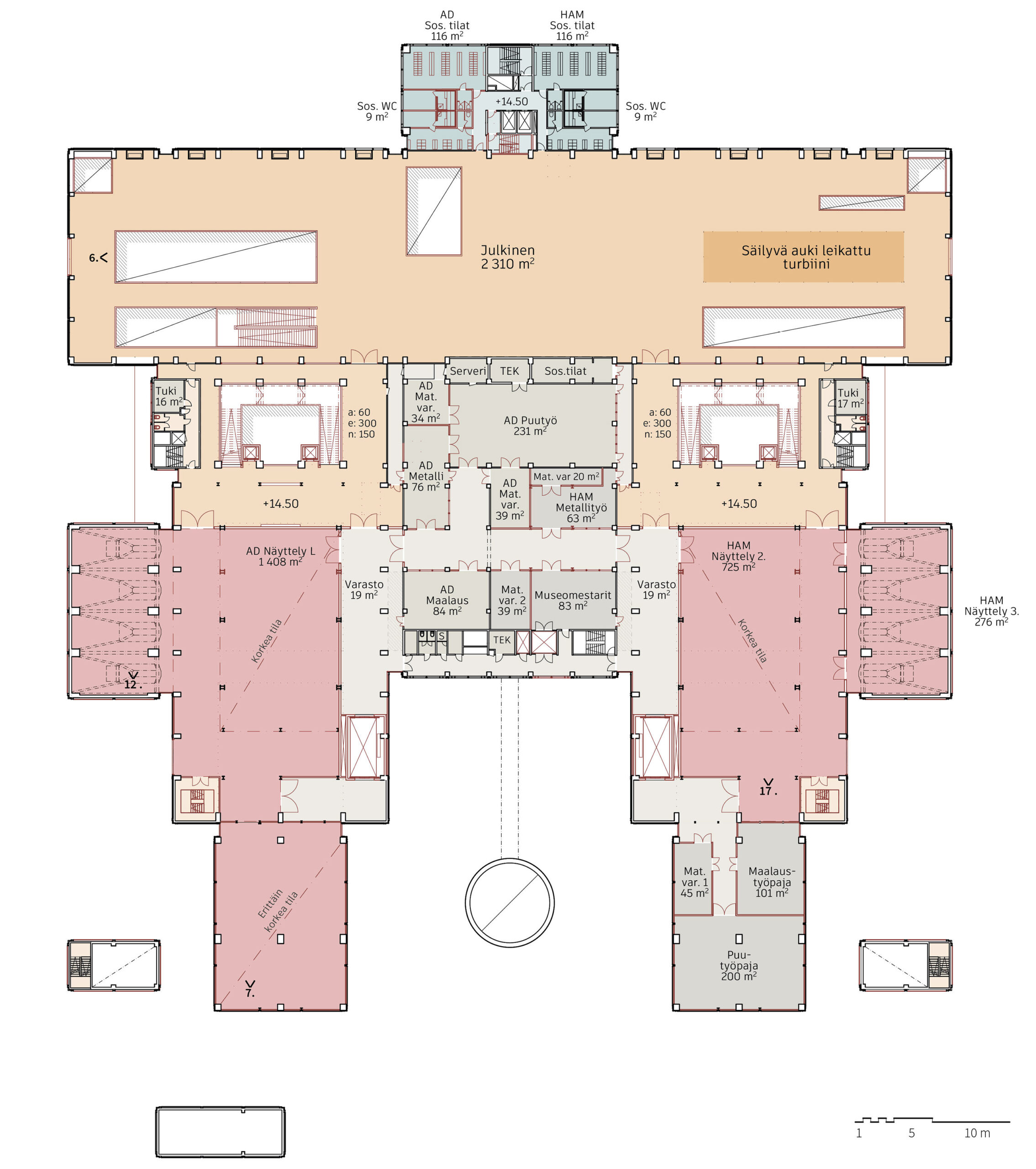Published in 4/2025 - Modern Heritage
From Power Plant to Cultural Institution?
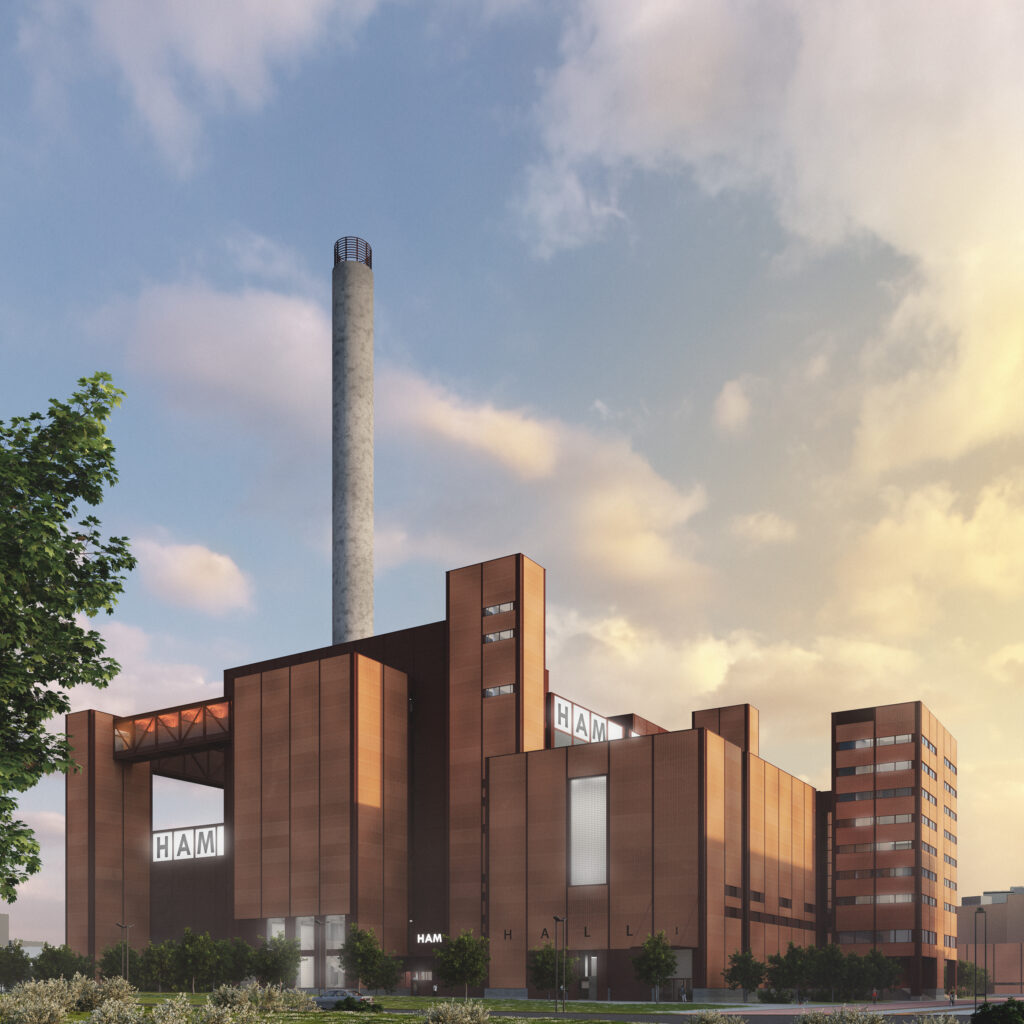
The design competition for the new museum of architecture and design, settled on 11 September, outlines a new museum building in Helsinki’s South Harbour. Valtteri Hautsalo presents an alternative to these plans and demonstrates how the museum could be set up together with Helsinki Art Museum in the former Hanasaari power plant.
The Hanasaari B Power Plant (Timo Penttilä 1974) has dominated the Suvilahti landscape in Helsinki for more than 50 years. Despite its commanding presence, however, the building has remained a distant, unapproachable giant to the city’s residents. The closing of industrial operations opens up an excellent opportunity to convert the power plant into an active part of the city, to be experienced by the people. I set out to examine this possibility in my master’s thesis, which was accepted by Aalto University in late 2024.
The colossal size of the power plant creates immense potential for reuse, and the building could accommodate several new functions. I made the choice of presenting the conversion of the power plant for the purposes of two museums, the Museum of Architecture and Design as well as Helsinki Art Museum (HAM). The museum operations would be supported by a more public urban space in the former turbine hall. Both museums were seeking new premises at the same time as I was working on my master’s thesis. They had previously considered the Hanasaari B Power Plant as one relocation option but eventually landed on other solutions.
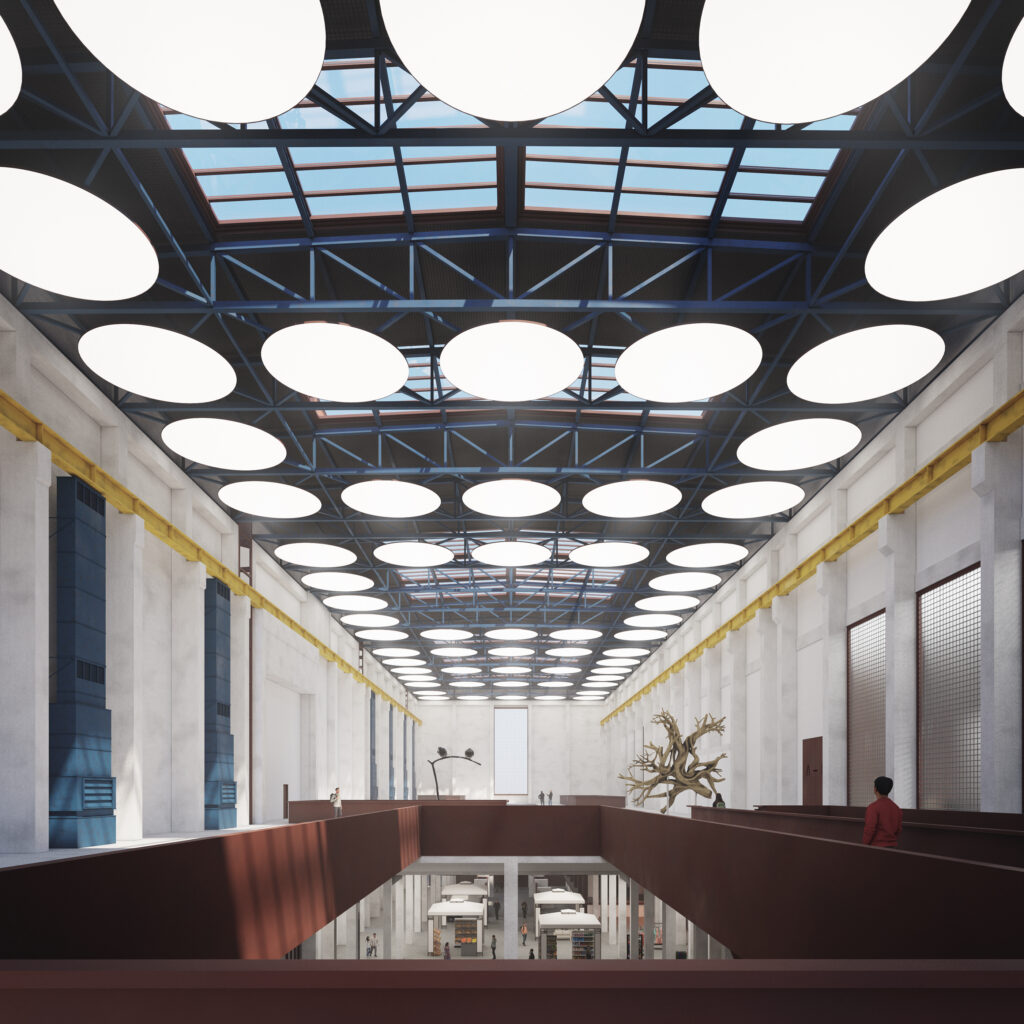
With two museums housed within the former power plant, the building does not become fragmented due to fundamentally differing uses, but is rather transformed into a cultural institution. The museums settle into the original symmetric layout and split into their own respective sides in the boiler houses, with the necessary and appropriate degree of spatial overlap and converging.
The power plant already strikes a distinctive silhouette in the cityscape, and it offers a number of unique spatial possibilities. An example of these are the cast-in-situ concrete coal distributor funnels on both sides of the power plant, at the end of the original coal conveyor line, which are incorporated in my plans of the exhibition spaces. The funnels are cut for the purposes of access and installations. The mouths of the funnels also serve as light fittings for the first exhibition floor.
In addition to functionality, the conversion plans had to solve several technical issues. Among these was the need to prevent contaminated soils and waters from affecting the indoor air, which was resolved by elevating the ground floor by some 1.5 metres and insulating the contaminated soil from the building with an airtight, mechanically ventilated base floor construction. This also serves to lift the floor level above what is necessitated by the predicted rise in sea level.
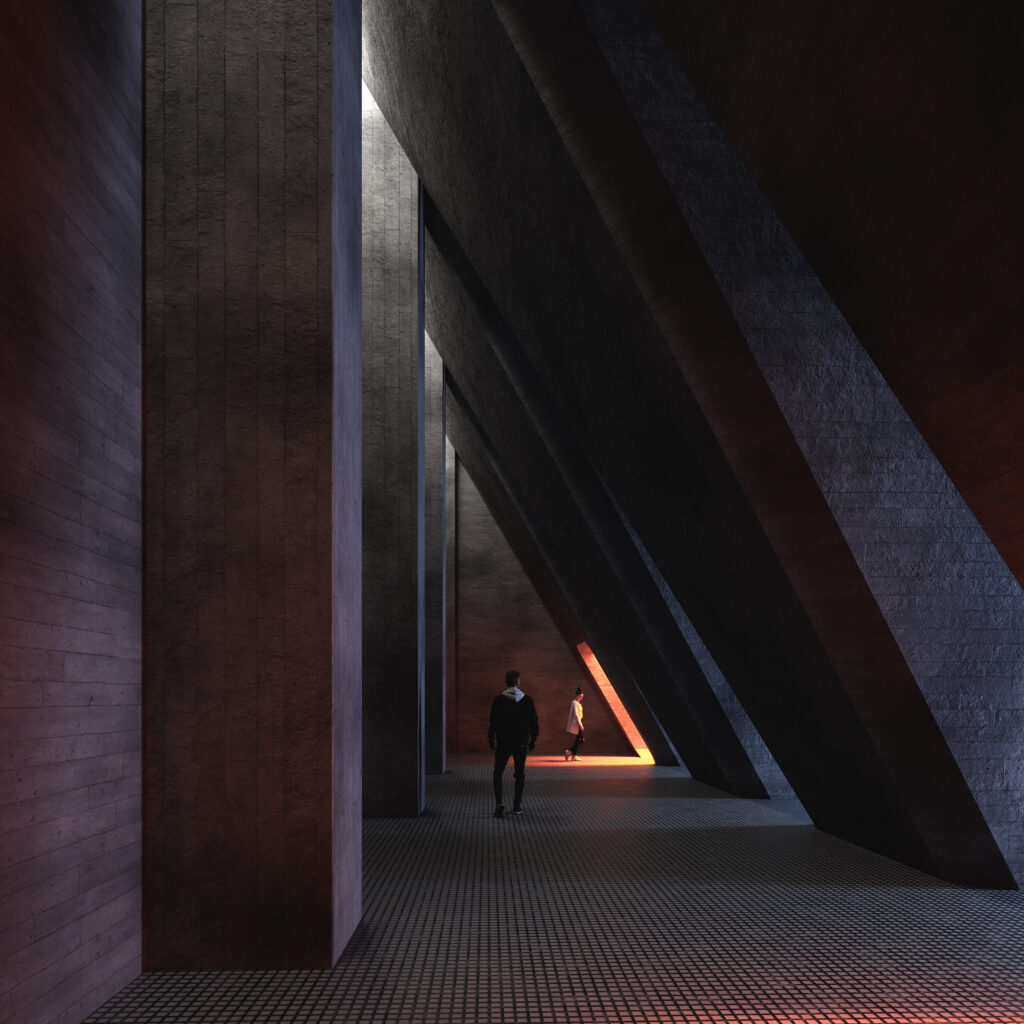
The brick facades also needed to be refurbished and the general heat insulation improved. The matter of the brick facades was resolved through slim brick tile facing. Its aluminium support brackets create a protective raincoat structure that can accommodate the required supplementary insulation without adding excessive bulk to the wall structure. Supplementary insulation for the facades clad in sheet steel panelling, however, is achieved from the inside of the wall structure, preserving the original facade.
With the current state of the environment in mind, an adaptive reuse of existing building stock is, in my view, the most appropriate avenue for creating new architecture. It should be encouraged and supported starting from legislation all the way to the calculation of carbon emissions, which currently does not require any inclusion of a building’s foundation in the building’s emission calculations but are instead counted separately as emissions from the construction site. The Hanasaari B Power Plant is just one, albeit unique, example of the immense potential that lies in our existing building stock. ↙
Valtteri Hautsalo’s master’s thesis Voimalan uusi tarkoitus – Hanasaaren B-voimalaitoksen uusiokäyttösuunnitelma (Power Station’s New Purpose – Adaptive Reuse of Hanasaari B Power Station) is publicly available in Aalto University’s publications archive.
Visualisations and drawings Valtteri Hautsalo
